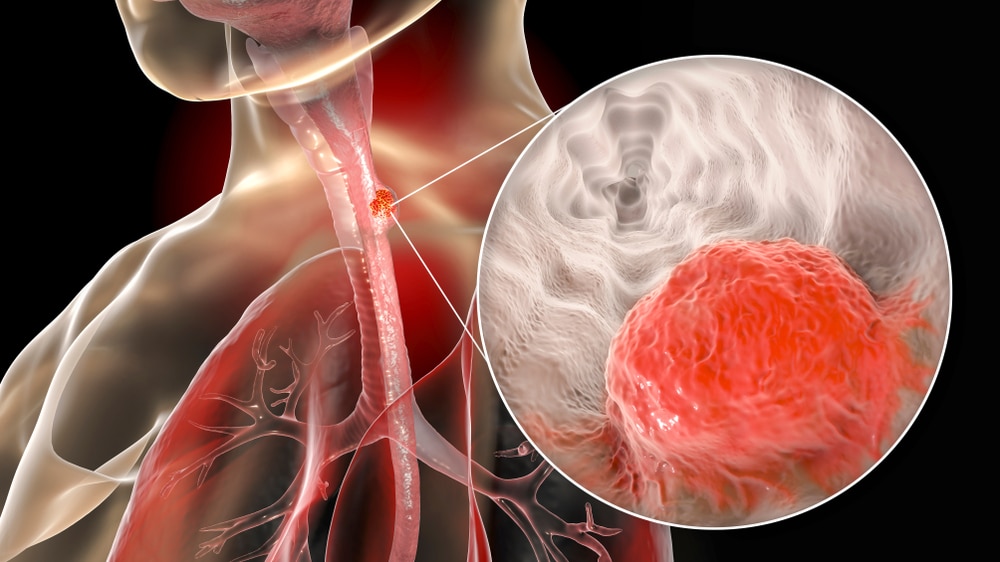The esophagus is a long, muscular tube leading to the stomach from the throat. It is made up of several layers of muscle, each of which contract to help food move down the tube and into the stomach. The esophageal sphincter is a special muscle that works as a valve, opening and closing to allow food and liquid to pass through. Esophageal cancer occurs as a result of abnormal cells in the esophageal tissue growing out of control, eventually forming a tumor or mass.
How Common is Esophageal Cancer?
Thankfully, esophageal cancer is not a common type of cancer, although it does rank among the ten most common cancers worldwide. In the US, around 4.2 in every 100,000 people will develop this cancer.
Causes and Risk Factors
While the exact cause of esophageal cancer isn’t known, there are several risk factors for the development of this disease. These include old age, with esophageal cancer occurring more often in those aged 60 and above, and male gender, with men three times more likely than women to develop this disease. Ethnicity can also play a part, with certain types of esophageal cancer occurring more often in Asians and African Americans. Tobacco and alcohol use can also increase your risk of developing esophageal cancer.
Symptoms to Look Out For
In the early stages, esophageal cancer may have no obvious symptoms. Difficulty with swallowing may be one of the first symptoms that people notice; this condition is known as dysphagia, and may require the use of special food items such as Simply Thick to make eating easier on the body. A chronic cough and hoarseness, vomiting or coughing up blood, pain in the throat, back, between the shoulder blades or behind the breastbone, or unintentional weight loss are also some common symptoms that might indicate esophageal cancer is present.
Treatment Options
There are different options to consider when it comes to the treatment of esophageal cancer. Surgery is the most common treatment option for esophageal cancer, with the procedure removing some or all or the esophagus along with some tissue around it. In some cases, the stomach may also be repositioned to move it up closer to the chest, or a piece of intestine may be used to preserve its function. Lymph nodes around the esophagus may also be removed and inspected under a microscope to determine if there is cancer present.
Radiation therapy and chemotherapy are two other treatment options that can be used to treat esophageal cancer. Chemotherapy uses medication to kill or stop cancer cell growth, while radiation therapy uses high-energy rays or radioactive substances to damage or kill cancer cells. This is typically done by aiming a radiation beam at the tumor, which interferes with growth and division to ultimately destroy the cancer cells.
Esophageal cancer impacts the esophagus and is thankfully a rarer type of cancer. Symptoms include trouble swallowing, pain in the area, weight loss, vomiting, and coughing. Typically, it is treated with either surgery, chemotherapy, or radiation therapy.



